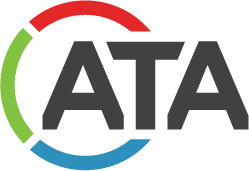The Non-Engineered Ballasting Tool (NEBT) calculates the “best practice” amount of ballast for non-engineered commercial tents.
Check out the Non-Engineered Ballasting Tool Not a member? Join Now
Modeling of Ballasted Non-Engineered Tents
Vincent Y. Blouin, Architecture / Materials Science and Engineering, Clemson University
Clemson University was contracted by the Advanced Textiles Association (ATA), formerly IFAI, to develop a tool for determining the wind loads applied on non-certified tents. The wind loads can be used to calculate the ballast weights required to safely secure any non-certified tent under any wind speed, terrain, ground surface, and ballast configuration.
A tent is defined by a set of parameters (such as length, width, and roof pitch) and operating conditions (such as wind velocity and direction, terrain, and ballast configuration). The failure modes of the tent are sliding, uplift and overturn and the failure modes of any ballast are sliding, uplift, and tilting.
The full technical report is intended to provide the theory and the detailed description of all calculations for estimating the wind loads and the corresponding ballast weights.
REPORT SUMMARY
The objective of this project, funded by ATA (formerly IFAI) and the American Rental Assocation (ARA), was to develop an analysis method for calculating the minimum ballast weights needed to safely hold down a wide range of non-certified frame and pole tents under any predefined wind velocity. The tent is defined by a list of parameters that dictate the wind loads applied on the tent. The parameters include: the type of tent (i.e., frame vs. pole), tent length and width, heave height, roof type (i.e., gable, hip, pyramid), roof pitch, bay width, wall configuration (i.e., open/enclosed), and ballast configuration, among others. Once developed, the analysis method was implemented into an online tool accessible to ATA’s membership, specifically the Tent Rental Division (TRD) for obtaining the recommended ballasts weights of non-certified tents.
Two methods of wind load calculations were considered for estimating the corresponding ballast weights:
Method 1 – as prescribed by code ASCE 7-10
Method 2 – based on exposed surface area
The wind loads applied on the tent include the horizontal sliding forces, the vertical uplift force, and the overturn moments corresponding to the two main wind direction (i.e., parallel and perpendicular to the tent length). The wind loads are then converted into local forces of moments applied on the ballasting system. Failure modes of the ballast (i.e., sliding, uplift, and tilting) are then considered to calculate the recommended ballast weights.
This report describes the two methods of wind load calculation and their assumptions. Both methods are assumed to be applicable to frame and pole tents. The difference between tent types comes into play in the ballast weight calculation specific to each ballast configuration. Six ballast configurations are considered:
- Conf. Fixed-to-plate – Upright and ballast are connected to a steel plate with guy line between ballast and upright
- Conf. Fixed-to-pole – Ballast against upright with guy line between ballast and upright
- Conf. A – Upright and ballast on a steel plate (no guy line)
- Conf. B – Upright and ballast on a steel plate with guy line between ballast and upright
- Conf. C – Ballast at a non-zero distance from upright with guy line between ballast and upright
- Conf. D – Ballast on steel plate with guy line between plate and upright
While all configurations are applicable to frame tents, only configurations Fixed-to-pole, B, C, and D are applicable to pole tents.
The results of all calculations suggest that configurations Fixed-to-plate and Fixed-to-pole are the most advantageous as they consistently offer the greatest resistance-to-weight ratio.
If you are interested in viewing the entire study, please contact Division Supervisor, Jill Newman at jill.newman@textiles.org.
 TEXTILES.ORG
TEXTILES.ORG



